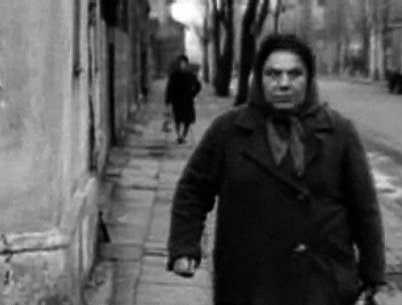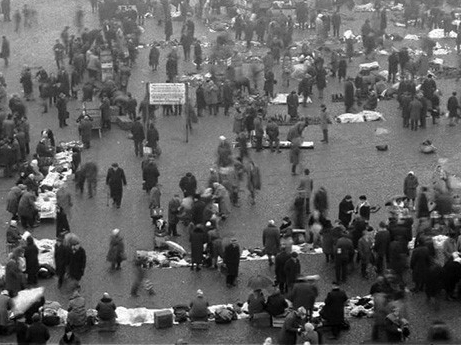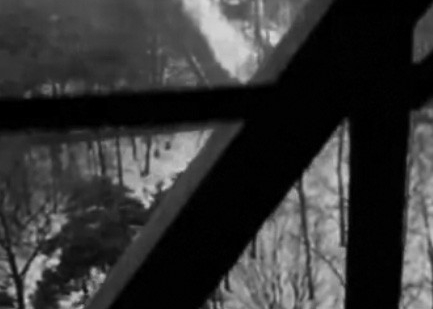In 1973, Andrzej Barański (b. 1941) graduated from the Film School in Łódź and worked as a short film director awaiting his feature film debut in 1979. He then went on to develop a broad cinematographic practice permeated with a lyrical and nostalgic mood, which he still pursues today. Winding Paths is a very early film by Barański that he made during his second year of studies at the Film School together with the cinematographer Zbigniew Rybczyński, who later developed an international career that saw, among other accolades, a 1982 Oscar win.
The film portrays a complex “ballet” of two people—a man and a woman—who live next door to each other but cannot seem to meet on their daily routes as they run errands. Both the man and the woman make their way around a little town, but their winding paths never cross. The camera follows each of them in the pursuit of their ordinary activities. Alongside it, a sound track that seems lifted straight out of a noir generates a mysterious atmosphere reminiscent of a crime film, suggesting that a key dramatic moment is about to happen. The eventual impromptu meeting of the two protagonists in the street, which lasts for only a moment and provides occasion merely to exchange greetings, serves as an ironic culmination of the film and releases the mysterious tension successfully built up by the film structure, camera work, and soundtrack. — Łukasz Mojsak



